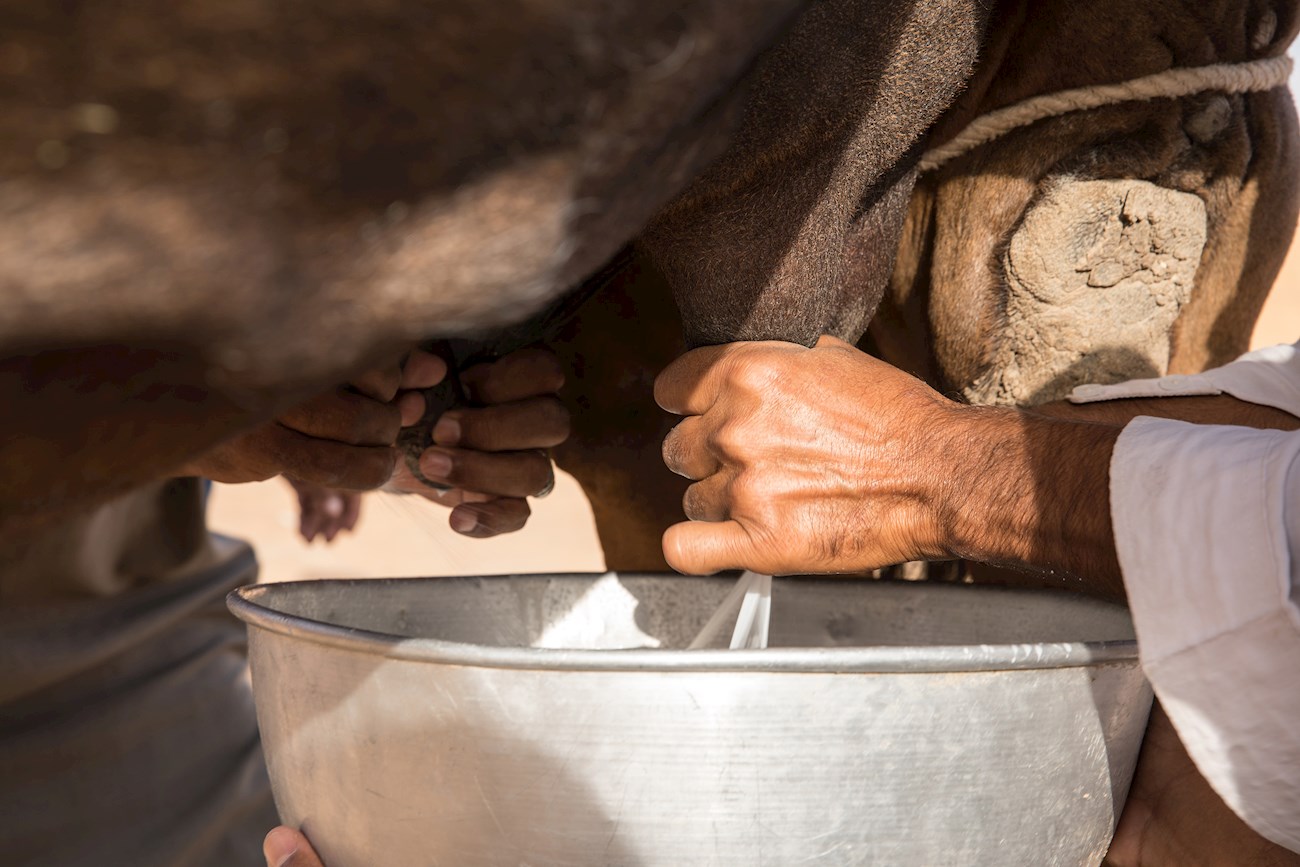Camel herding is deeply rooted in the life, culture, and tradition of the Karrayyu, an ancient nomadic pastoralist tribe living in Ethiopia. Karrayyu herders residing in the Fantalle district have a long tradition of camel milking, camel milk production, and consumption of fresh camel milk, which, along with barley, has been an essential food source for the tribe.
Milking typically happens twice a day, and the milk is traditionally collected in grass-woven vessels before being sold in nearby towns. Distinguished by a unique, savory, and aromatic flavor, fresh Karrayyu herder’s milk has a pure white color and thick foam on its surface.
Camel milk has a lighter consistency, lower fat content, and higher nutritional value than cow’s milk, and it has been highly-prized for possessing excellent healing properties. Cheese, yogurt, or other processed milk products haven’t been produced from camel milk in the past, although attempts to change this have been made in recent years.
Aside from the Karrayyu nomadic herders, the Somalis are also extremely fond of camel milk, which they often combine with ginger, cinnamon, and sugar into a flavor-packed beverage that is offered at their small shops. Unfortunately, the survival of the Karrayyu camel herds and the production of this delicacy are threatened by climate change and drastically reduced lands caused by the expansion of sugarcane plantations and wildlife conservation schemes.

